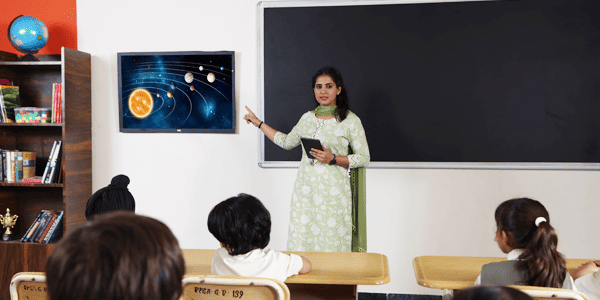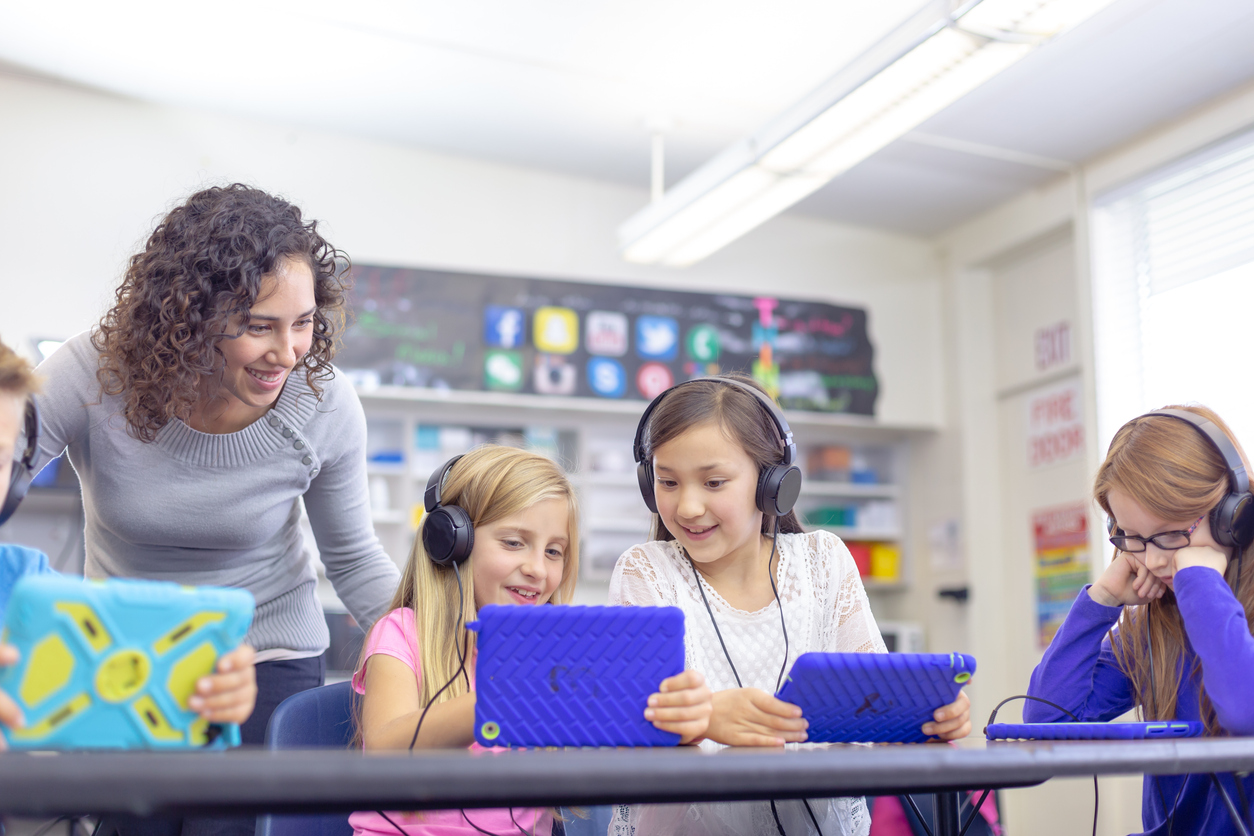Achieve Academic Success with Primary Science Tuition Singapore
Achieve Academic Success with Primary Science Tuition Singapore
Blog Article
A Comprehensive Guide to the Numerous Knowing Techniques in Primary Scientific Research Direction
The exploration of varied discovering techniques in key scientific research guideline provides a chance for educators to improve trainee engagement and understanding substantially. By checking out hands-on knowing techniques, inquiry-based methods, and collaborative approaches, we can recognize effective practices that satisfy different finding out designs. Additionally, the assimilation of technology and distinguished guideline plays a critical duty in promoting an inclusive setting. Nonetheless, the question stays: just how can these techniques be efficiently applied in the class to maximize their influence? The response depends on a more detailed assessment of each method and its ramifications for mentor science.

Hands-On Knowing Techniques
Hands-on understanding methods play a critical role in key scientific research guideline, engaging pupils in active exploration and testing. These approaches allow students to interact straight with products and phenomena, fostering a much deeper understanding of scientific ideas. By utilizing manipulatives, models, and real-life experiments, instructors develop an atmosphere where pupils can observe, assume, and check their concepts.
Such strategies not just enhance comprehension yet likewise cultivate crucial reasoning and analytical skills. When students get involved in tasks like developing basic devices, growing seeds, or carrying out chemical reactions, they are motivated to ask questions and look for responses via their own observations. This experiential method aids to demystify complex scientific concepts, making them a lot more relatable and easily accessible.
Additionally, hands-on understanding advertises collaboration amongst peers, as pupils typically function in teams to conduct experiments or share findings. This team effort not just enriches their knowing experience however also creates important social abilities. Eventually, integrating hands-on strategies in primary scientific research instruction cultivates a lifelong love of understanding and inquisitiveness regarding the environment, laying a solid foundation for future academic pursuits in science and beyond.
Inquiry-Based Knowing
Inquiry-based learning is an instructional approach that urges students to ask questions, explore sensations, and create their own understanding of clinical concepts. This technique changes the focus from standard teacher-led instruction to a much more student-centered experience, where students take the campaign in their educational trip. By promoting inquisitiveness, inquiry-based knowing promotes much deeper engagement with the product, enabling students to check out topics in a meaningful context.
In practice, this technique usually involves hands-on experiments, observations, and important thinking activities that line up closely with the clinical approach. Trainees are motivated to develop theories, style examinations, and assess information, which grows crucial skills such as analytic and analytical thinking. The function of the educator in this structure is to help with expedition, directing students with the questions process while urging independent thought and collaboration.
Furthermore, inquiry-based learning nurtures a sense of ownership over the understanding process, motivating pupils to seek knowledge proactively. This technique not just improves understanding of scientific ideas yet also fosters a lifelong love for discovering, outfitting pupils with the skills required to navigate a progressively complex world.
Collaborative Learning Approaches
Joint understanding methods encourage students to participate in purposeful interactions with peers, fostering check out this site a common duty for their educational outcomes. In key science instruction, these strategies encourage learners to collaborate to check out clinical principles, address troubles, and conduct experiments (primary science tuition Singapore). By taking part in group tasks, trainees can utilize varied viewpoints, permitting richer understanding and retention of clinical understanding
One secret aspect of collective knowing is the focus on communication skills. Trainees need to verbalize their ideas, listen actively to others, and bargain ideas, all of which are critical competencies in both academic and real-world contexts. This social interaction not just boosts their understanding of scientific principles however additionally promotes teamwork and dispute resolution abilities.
When students see the worth of their contributions within a group, they are much more most likely to take possession of their understanding journey. Overall, integrating joint discovering methods in main scientific research direction grows a vibrant understanding atmosphere that prepares pupils for future scholastic and social challenges.
Innovation Assimilation in Scientific Research
The combination of innovation in key science guideline enhances learning experiences by providing cutting-edge devices and resources that click here to read support numerous training techniques, consisting of joint discovering - primary science tuition Singapore. Making use of digital platforms, simulations, and interactive applications enables students to engage deeply explanation with scientific concepts, facilitating an extra hands-on approach to discovering
Virtual labs, for instance, allow students to carry out experiments securely and effectively, promoting inquiry-based learning. These tools can mimic real-world clinical situations, enabling pupils to visualize intricate procedures that would certainly be hard to duplicate in a standard classroom setup. In addition, modern technology promotes interaction and partnership among pupils, as they can share findings and function together on projects with on the internet systems.
Additionally, multimedia presentations and instructional videos can improve lessons by dealing with varied knowing designs, making abstract ideas much more available. Data analysis tools additionally empower trainees to collect and analyze scientific information, strengthening essential assuming abilities. Generally, the critical consolidation of technology in main science guideline not just enhances engagement however also prepares students for a technologically innovative culture, furnishing them with vital abilities for future scientific ventures.
Distinguished Direction Approaches
Separated guideline approaches are crucial for resolving the varied needs of students in key scientific research education. These techniques enable teachers to tailor their teaching methods to suit differing abilities, passions, and learning designs within the class. By employing separated direction, educators can develop an inclusive setting that cultivates interaction and enhances understanding of scientific principles.
One effective approach is to utilize adaptable organizing, which allows students to work together with peers at similar skill degrees or with differing perspectives. This method motivates peer discovering and advertises vital thinking. In addition, using selections in jobs can encourage students, permitting them to choose projects that resonate with their rate of interests while still meeting curricular purposes.
Additionally, integrating tiered tasks is an additional important technique. By creating tasks with varying degrees of intricacy, instructors can make sure that all students are appropriately tested, despite their effectiveness. Utilizing developmental evaluations to evaluate understanding more makes it possible for educators to change their educational techniques dynamically, ensuring that each learner gets the assistance they require.
Eventually, applying separated instruction approaches in key science education not only boosts pupil discovering end results yet additionally cultivates an interest for science, preparing trainees for future scholastic quests.

Verdict
In summary, reliable primary science instruction requires a multifaceted technique that includes hands-on understanding, inquiry-based approaches, and collaborative techniques. The integration of technology and separated direction further caters to diverse knowing styles, fostering a setting favorable to exploration and important thinking.
The exploration of varied discovering approaches in primary scientific research instruction presents a possibility for instructors to improve trainee engagement and understanding substantially.Hands-on discovering techniques play a pivotal duty in key scientific research instruction, involving pupils in active exploration and experimentation.Inquiry-based understanding is an instructional approach that urges students to ask concerns, investigate phenomena, and construct their very own understanding of clinical principles.Joint discovering techniques equip pupils to engage in purposeful communications with peers, promoting a shared duty for their instructional results. On the whole, integrating collective understanding approaches in primary science guideline cultivates a vibrant discovering environment that prepares pupils for future academic and social difficulties.
Report this page